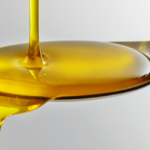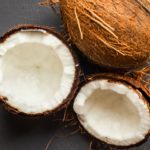The Healing Essential Fatty Acids, Part 3: Some Functions of LA and ALA

Much is still unknown about the functions of EFAs in our body. Of the two, LA has been studied far more extensively than ALA. Both are difficult to work with, because they are easily destroyed, but ALA is five times more sensitive to destruction than LA.
Energy production
There is still a lot of work to be done before ALA’s activities are fully understood (this is also true for all other essential nutrients – vitamins, minerals, trace elements, and amino acids). However, a list of functions in which they are involved can be given, based on scientific studies, clinical experience, and understanding of their chemical nature.
Overall, EFAs are involved with producing life energy in our body from food substances, and moving that energy throughout our systems. They govern growth, vitality, and mental state. They hook up oxygen, electron transport, and energy in the process of oxidation. Oxidation, the central and most important moment-to-moment living process in our body, is the ‘burning’ of food to produce the energy required for life processes.

Oxygen transfer
LA and ALA are thought to be involved, in ways not well understood, with the transfer of oxygen from air in our lungs, through the thin lung tissue (alveolar) membranes, through capillary walls into the watery fluid in which our blood cells are suspended (blood plasma), across the membranes of our red blood cells to hemoglobin, which then carries oxygen to all our cells. At the cell end, they apparently help transport oxygen from our red blood cells through plasma, across the walls of our capillaries, across cell membranes and, in our cells, to precise location(s) in our mitochondria which use it in oxidation reactions to produce energy.
EFAs can be likened to oxygen ‘magnets’ that pull oxygen into our body similar to the way in which a magnet pulls iron filings. LA and ALA appear to hold oxygen in our cell membranes, where the oxygen acts as a barrier to viruses, fungi, bacteria, and other foreign organisms that cannot thrive in its presence.
Hemoglobin production
LA helps produce red blood pigment (hemoglobin) from simpler substances. Both EFAs are involved in a process that makes oxygen available to our tissues by ‘activating’ (or opening) oxygen molecules by way of free radicals or electrostatic forces, regulated by sulphur-containing proteins.





